Part 3⁄7 Do Chinese Muslim traditions and stories reveal the true history of the Qibla? Did Said Ibn Abi Waqqas really emigrate China with the Muhajadin of the true Mecca? Discover what it is all about in this video.
TRANSCRIPT
Hello, I’m Dan Gibson, and welcome to the third video in the series, “The Qibla Story”. This video is about China and a man known as Sa’d Ibn Abi Waqqas. Sa’d was born in the holy city in 595 AD. At that time the Prophet Muhammad was only 25 years old, and he had just married Khadija. Sa’d was also from the Quraysh tribe. His father was the paternal uncle of Amana, the mother of Muhammad. Sa’d was 17 years old when he accepted Islam, and it was against the wishes of his family. He was among those who emigrated to Medina in the first year of the Islamic calendar. In 614 Sa’d was with Muhammad when they were opposed by polytheists who started to fight them and beat them. So Sa’d beat a polytheists and he killed him, and he became known as the first Muslim to shed blood in the name of Islam. That same year, many of the followers of Muhammad fled to Abyssinia.
So, Sa’d was around during the events of the first years of Islam. He and his younger brother, ʿUmayr, fought at the Battle of Badr. Sa’d returned to Medina alone because ʿUmayr was one of the 14 Muslims who died in the Battle of Badr. Sa’d was among those who fought right alongside of Muhammad. After some of the Muslims had deserted their positions at Badr, but Saad stood firm, and Muhammad honored him by declaring him one of the best archers at that time. During the battle, the Prophet even gathered some arrows for him. Later, at the farewell pilgrimage, Sa’d fell ill (he had only a daughter at that time). So Sa’d asked Muhammed, “Oh Messenger of Allah, I have wealth and I only have a daughter to inherit from me. So I give 2⁄3 of my wealth as sadaqak.” “No,” replied the Prophet. “Then shall I give ½?” asked Sa’d. The Prophet again said no. “Then shall I give 1⁄3?” asked Sa’d. “Yes,” said the Prophet, ”Even the third is much. Indeed, to leave your heirs well-off is better than that you should leave them dependent on others, begging from people. If you spend anything seeking to gain, thereby, the pleasure of Allah, you will be rewarded; for even if it’s only a morsel that you place in your wife’s mouth.” Many sermons have been preached on those verses. So Sa’d is well known to Muslims all around the world. Sa’d Ibn Abi Waqqas was among those who built the city of Kufa in Iraq and Sa’d Ibn Abi Waqqas fought under Halif Ummar’s command against the Sassanid army in several battles. He was later appointed the governor of Kufa and of Najjid. In the end Halif Umar dismissed him from his post as governor but said it was not because he had done any treachery. Later, Sa’d was one of six people nominated by Ummar, the Caliph, to be the next Calif!
This is where the Middle Eastern account of Sa’d ends, and he seems to disappear from view of the history books that we’ve been reading. There is a shrine in Medina to honor his death, but there’s always been some question whether the shrine - was a shrine, or a tomb? The locals say, “Oh, it’s a tomb. He was buried here.” But the Chinese claim that that is only a shrine there in Medina, and that the actual tomb of Sa’d lies in China. Now this is where things start to get interesting. This summer I received an email from a Chinese historian who is the family historian for his extended tribe. They have oral and written accounts, of what took place in China during the early days of Islam. These Chinese Muslims claim that Sa’d Ibn Abi Waqqas introduced Islam to China in 650 AD, during the reign of emperor GaoZong of Tang. This is confirmed by several scholars.
Return to the City of Light: Quanzhou, an eastern city shining with the splendour of medieval culture. by Lianmo Wang (2000)
Familiar strangers: a history of Muslims in Northwest China. by Jonathan Neaman Lipman,(1997)
It’s interesting to note that there is a mosque in the Lalmonirhat District of Bangladesh which is said to have been built by Sa’d himself in 648 on his way to China. It’s locally called after his name as the Abu Akkas Mosque. There are sources that speak of this mosque.
সাড়ে তেরো শ বছর আগের মসজিদ” [1350 Year-old Mosque]. by Kajal Mahmood, 2012 “History and archaeology: Bangladesh’s most undervalued assets?” 2012.
I have not found any further information on this mosque, nor have I been able to visit it. It’s over 400 kilometers from the ports of Bangladesh, so if Sa’d was actually there, he must have traveled far inland.
Now it’s said that Sa’d outlived the Ten Blessed Companions, to whom the Prophet promised paradise, and he died in GuangZhou in China at the age of 80, around the Year 674. As I said, this summer I exchanged a number of emails with a Chinese family historian. He had a story that had been handed down from generation to generation. It’s been repeated in some Chinese mosques and Islamic schools. This story says that Sa’d Ibn Abi Waqqas went to China with a group of people, but they did not return to Arabia. Despite Caliph Uthmann sending a delegation for them in 651, asking them to come back; they refused to come back. They claimed that Sa’d took 40 other Muslims with him when he went to China and the Chinese Muslims called them muhajireen, or emigrants. This is the same word that is used for those who emigrated from the first Mecca to the city of Medina in year 1 of Islam. But in this case, it is applied to Muslims who emigrated from Medina to China. Sa’d Ibn Abi Waqqas led them. Now these 40 emigrants traveled to the city of GuangZhou. They refused to return to Arabia; and so in time all of them died in China. They are entombed in the XianXian mosque in GuangZhou. Xian means “the western peace” (xi means west and an means peace). GuangZhou at that time was the capital of that region and was known in the West as Canton. It was the place where Western merchants had come over several hundred years before this, and would be there for many hundreds of years later. Many years later (six hundred years) when Marco Polo showed up, there were over a hundred thousand Muslims living in Canton.
Now, there are two more interesting things that this Chinese historian told me. First, he said that in 651 Caliph Uthmann sent this delegation to the Muslims in Canton asking them to return, but they insisted they would not return. The Chinese historian said that these forty Muslims were called the muhajirun of the true Mecca. So they live there and they died there and they are considered Islamic Saints in China to this very day. Second, he told me that the last Empress of China - Dowager CuXi - put up a plaque in the threshold of the Huai-Sheng Mosque titled “Jiao Chong Xi Yu” plaque, which means (the Chinese historian told me) “the true source of Islam is from west of Mecca”. This plaque was put up, no doubt, by Imperial decree and there has never been to this day any objection from Muslim scholars in China to the term “west of Mecca”. Here’s an old photo of that plaque.
When I visited China I went to the Huai-Sheng Mosque in Guangzhou, and I measured the Qibla of that mosque. I was unaware of the tomb of the 40 muhajireen or the Arab Muslim emigrants to China. At that time I classified that mosque as facing Petra. But over time Western scholars put a lot of pressure on me to reconsider this mosque because it was so early, they said, and they doubted that it could be accurate from such a great distance from the Middle East. So, in the end I changed my classification to “unknown”. Then this summer I received these emails from this Chinese historian asking me to reclassify the mosque back to being oriented to Petra! So what am I to do?! I wish I had more written records! All I have is hearsay handed down from generation to generation; it is nothing that I can reproduce clearly enough to convince Western scholars. So I have to ask, “What do we do with the two tombs for Sa’d Ibn Abi Waqqas and the 40 Mujahideen?” There is a place in the graveyard in Medina that people say is Sa’d’s tomb, and there is a tomb in China where the Chinese say that Sa’d is buried along with the 40 muhajireen of the true Mecca.
Now, I have no answer. I have no proof on either side and so I leave it up to you. But, it’s interesting that all of these ideas were kept alive in China while they had been lost in the West. As I said in the last video when Khalid al-Qasri was appointed as the governor of Mecca in 91 AH (after the Hijra, or 710 AD) he was very strict and he enforced unpopular views. One of them being that the Caliph’s interpretation of history and religion is the only correct version. And that did it for the Middle East: The memory of Petra was wiped out; the Mecca in Saudi Arabia became the only official version of Muslims in Arabia. Was the real truth kept alive in China by Chinese Muslim families up to this day? I’m Dan Gibson and this has been the third video in the series the Qibla story
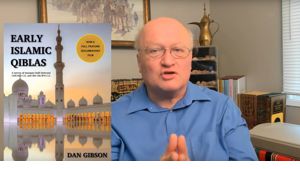
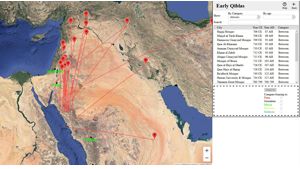
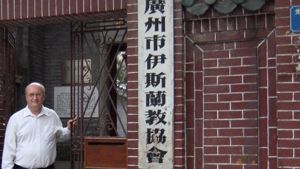
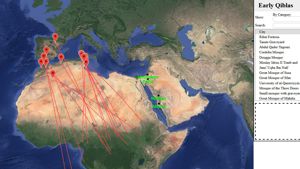
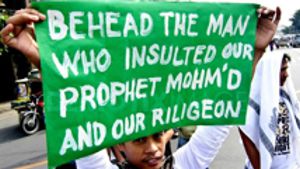
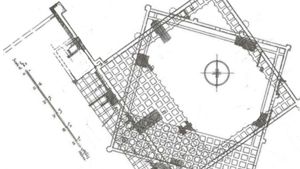
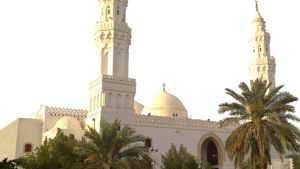
Page Discussion
Membership is required to comment. Membership is free of charge and available to everyone over the age of 16. Just click SignUp, or make a comment below. You will need a user name and a password. The system will automatically send a code to your email address. It should arrive in a few minutes. Enter the code, and you are finished.
Members who post adverts or use inappropriate language or make disrespectful comments will have their membership removed and be barred from the site. By becoming a member you agree to our Terms of Use and our Privacy, Cookies & Ad Policies. Remember that we will never, under any circumstances, sell or give your email address or private information to anyone unless required by law. Please keep your comments on topic. Thanks!